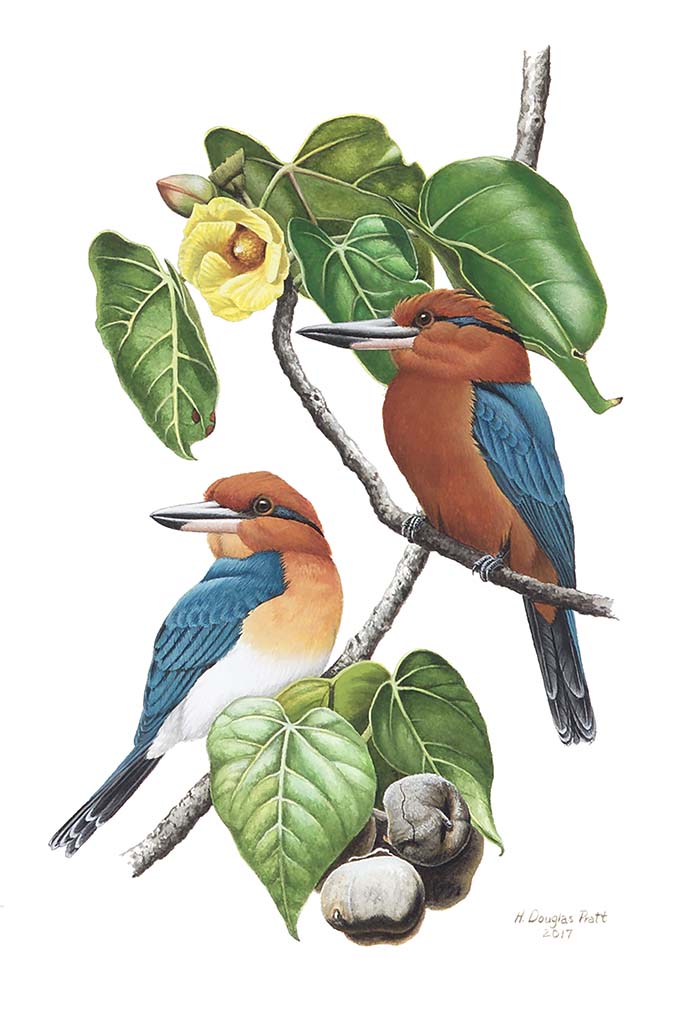Sihek: An endangered species

Scientific Name: Halcyon cinnamomina cinnamomina (Family ALCEDINIDAE)
Common Name: Micronesian Kingfisher
CHamoru Name: Sihek
Audio sample of the Sihek
Habitat and Natural History: The Micronesian Kingfishers are somewhat secretive. They are known to inhabit limestone and ravine forests, coconut groves, and strand vegetation. Pairs excavate a cavity for a nest in soft-wooded trees and in above ground termite nests. Nesting occurs between December and July. Two eggs are laid. Both parents tend the eggs and young birds. They feed exclusively on animal matter including crabs, lizards and large insects. Pairs or sometimes family groups defend a territory chasing off other kingfishers.
Description: They are a medium sized kingfisher, 22 to 24 centimeters (nine inches) with a big head and big bill. Males and females have different coloration. Males are iridescent blue above the body and rusty cinnamon below. Females are similar with white below.
Range: There are three distinct subspecies of Micronesian Kingfisher which are found on Palau, Pohnpei and Guam. Halcyon cinnamomina cinnamomina is the Guam endemic subspecies.
Current Status: The Micronesian Kingfisher has been extirpated from Guam, and was last seen in the wild in 1989. It is listed as endangered by the US Fish and Wildlife Service and the Government of Guam. A captive breeding program was begun in 1983. Currently, it is held in captive breeding programs on Guam and zoos on the US mainland and reached its goal of 100 sihek in November 2008, bringing the bird a step closer to re-establishment of a wild population.
The first captive-reared sihek were returned to Guam in 2003, with more birds returned in 2004 and in 2008, bringing the captive population on Guam to 10. It was expanded to include seventeen captive propagation facilities on the US mainland and Guam.
SEPTEMBER 2019 UPDATE: Formerly known as the Micronesian kingfisher, the Guam kingfisher or sihek, is still listed “extinct in the wild.” The are currently about 140 individuals left in the world. Guam DAWR currently hosts nine individuals. There are currently 26 zoological institutions across the US hosting the birds for their breeding programs. The Guam sihek will be the next bird to make its way back into the wild. Planning is currently underway for reintroduction.
Threats: The main threats are habitat destruction and predation by the introduced brown treesnake.
Visit a Sihek
Lincoln Park Zoo in Chicago, Illinois and the Guam Micronesian kingfisher
